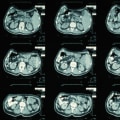In the modern world of healthcare, medical imaging stands as one of the most revolutionary advancements, dramatically changing how diseases are diagnosed, treated, and monitored. "The Revolutionary Role of Medical Imaging in Healthcare" highlights just how pivotal this technology has become. From X-rays and CT scans to MRIs and ultrasounds, imaging allows doctors to see inside the human body without surgery, providing critical insights that drive faster, more accurate medical decisions. Thanks to continuous innovations, medical imaging has not only saved countless lives but also opened the door to earlier interventions and better outcomes for patients across the globe.
Early Detection and Diagnosis
One of the most important contributions of medical imaging is the ability to detect diseases in their earliest stages. Early diagnosis is often the difference between life and death, particularly in conditions like cancer, heart disease, and neurological disorders. Imaging technologies such as mammograms for breast cancer screening or low-dose CT scans for lung cancer detection enable doctors to catch problems before symptoms even arise. Early detection leads to earlier treatment, which can drastically improve survival rates and reduce the complexity and cost of medical care in the long run.
Guiding Treatment and Surgical Procedures
Medical imaging doesn’t just stop at diagnosis—it also plays a critical role in guiding treatments. Surgeons rely on real-time imaging technologies such as fluoroscopy and intraoperative MRI to perform precise operations with minimal invasiveness. Cardiologists use imaging to navigate catheters during heart procedures, while oncologists plan targeted radiation therapies using detailed scans of tumors. The ability to visualize the exact location, size, and structure of internal problems allows for more accurate treatments and greatly reduces risks during surgeries. Without imaging, many of today's advanced medical procedures would not be possible.
Monitoring Progress and Recovery
After a diagnosis and treatment have been initiated, imaging continues to serve an essential role by monitoring patient progress. Follow-up MRIs, CT scans, and ultrasounds help doctors assess whether treatments are working and whether a disease is regressing, progressing, or staying stable. This ongoing monitoring allows healthcare providers to adjust treatment plans in real time, ensuring that patients receive the best possible care at every stage of their recovery journey. Imaging provides a window into the body’s response to medical intervention, offering feedback that is immediate, reliable, and non-invasive.
Advancing Personalized Medicine
The future of healthcare lies in personalized medicine—an approach that tailors medical care to the individual characteristics of each patient. Medical imaging is crucial in this evolution. Detailed images of organs, tissues, and even cellular activity help physicians design treatments that are specifically suited to a patient’s unique biology. Advanced imaging techniques, like PET scans and functional MRIs, go beyond anatomy and show biological processes in action. These insights enable more targeted therapies, better prediction of treatment outcomes, and a shift away from one-size-fits-all approaches toward highly individualized care.
Accessibility and Innovation in Medical Imaging
As technology advances, medical imaging is becoming more accessible to people in all corners of the world. Portable ultrasound machines, faster and lower-radiation CT scanners, and artificial intelligence that enhances image analysis are making imaging faster, safer, and more affordable. Innovations such as mobile imaging services and at-home diagnostics are also gaining ground. In fact, just as modern conveniences like the ability to get a blood test at home in Pune make healthcare more accessible and patient-friendly, portable imaging technology ensures that even those in remote or underserved areas can benefit from early diagnosis and expert care without needing to travel long distances.
Reducing Healthcare Costs Through Better Diagnosis
Another critical impact of medical imaging is its role in controlling healthcare costs. By enabling early detection, more accurate diagnoses, and better treatment planning, imaging reduces the likelihood of unnecessary surgeries, extended hospital stays, and prolonged treatments. A quick scan today can prevent costly interventions later. Additionally, improved imaging reduces diagnostic errors, preventing misdiagnosis-related costs and emotional strain for patients. Overall, the strategic use of imaging leads to more efficient healthcare systems and better patient outcomes.
Conclusion: Visualizing a Healthier Future
Medical imaging has truly revolutionized the way healthcare is delivered, from the first hint of disease through diagnosis, treatment, and recovery. Its ability to provide real-time, accurate, and detailed views of the human body without invasive procedures has transformed medical practice and saved millions of lives. As technology continues to evolve, medical imaging will only become more powerful, more accessible, and more integral to personalized, efficient, and effective care. With imaging lighting the path forward, the future of healthcare looks brighter, smarter, and more compassionate than ever before.






